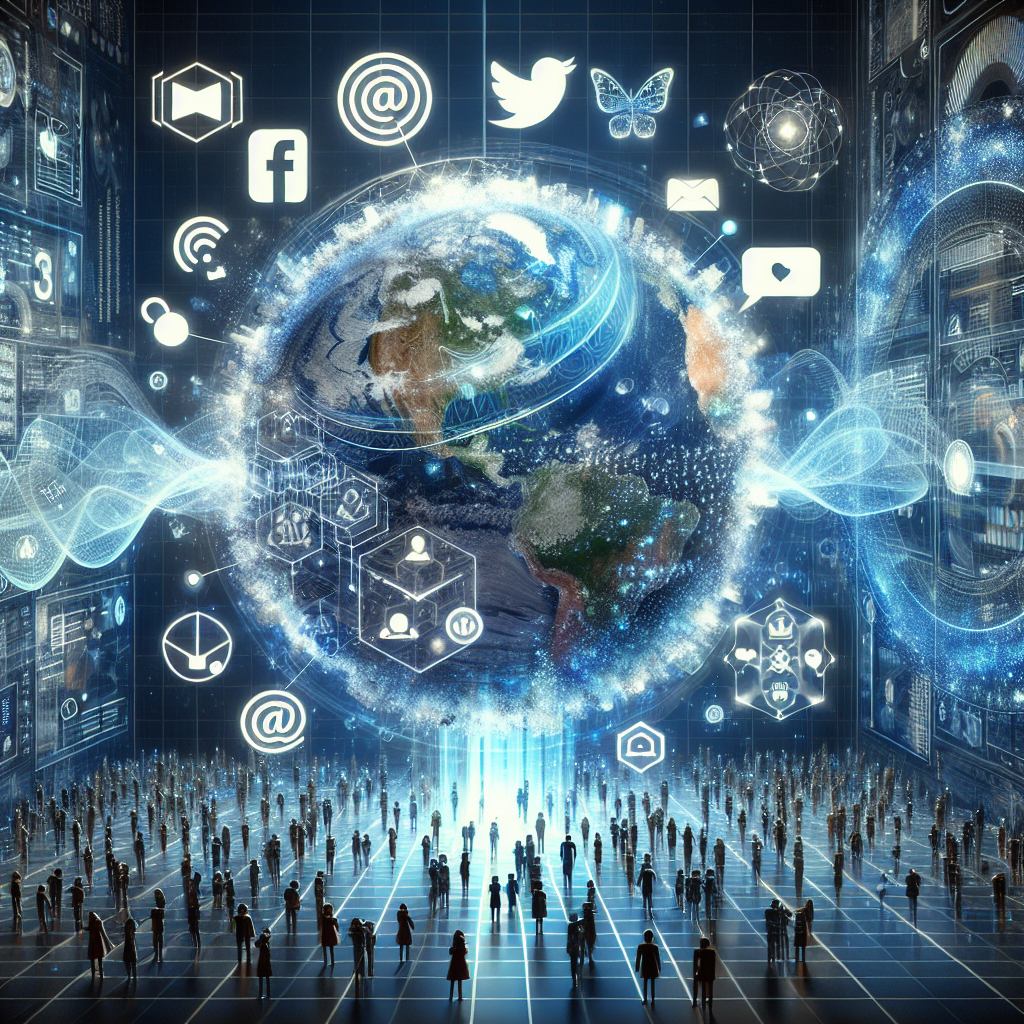The intersection of augmented reality (AR) technology and social media has been a hot topic in recent years, as both technologies continue to evolve and offer new opportunities for users to interact and engage with each other. AR technology allows users to overlay virtual objects or information onto the real world, creating immersive and interactive experiences. Social media, on the other hand, provides a platform for users to connect with each other and share content in real-time.
The combination of AR technology and social media has the potential to completely transform how we interact with each other and experience the world around us. From Snapchat’s popular AR filters to Instagram’s AR effects, these platforms are constantly pushing the boundaries of what is possible with AR technology and social media.
One of the most exciting aspects of the intersection of AR technology and social media is the potential for brands and businesses to create immersive and interactive experiences for their audiences. By using AR filters and effects, brands can engage with their customers in a whole new way, offering personalized and interactive content that goes beyond traditional advertising.
In addition, AR technology can also be used to enhance the social media experience for users. For example, AR filters can make selfies more fun and engaging, while AR effects can add an extra layer of creativity to videos and photos. This can help users create more engaging and shareable content, leading to increased engagement and visibility on social media platforms.
Another area where AR technology and social media intersect is in the realm of live events and experiences. With the rise of virtual events and live streaming on social media platforms, AR technology can be used to enhance these experiences even further. For example, AR filters and effects can be used to create virtual backgrounds and overlays for live streams, making them more interactive and engaging for viewers.
Overall, the intersection of AR technology and social media offers endless possibilities for users to interact and engage with each other in new and exciting ways. As these technologies continue to evolve, we can expect to see even more innovative and immersive experiences that blur the lines between the digital and physical worlds.
FAQs:
1. What are some examples of AR technology being used on social media platforms?
Some examples of AR technology being used on social media platforms include Snapchat’s AR filters, Instagram’s AR effects, and Facebook’s AR games. These features allow users to overlay virtual objects or effects onto their photos and videos, creating immersive and interactive experiences.
2. How can brands and businesses leverage AR technology and social media?
Brands and businesses can leverage AR technology and social media by creating immersive and interactive experiences for their audiences. This can include using AR filters and effects to engage with customers in a new way, as well as enhancing live events and experiences with AR overlays and effects.
3. What are some benefits of combining AR technology and social media?
Some benefits of combining AR technology and social media include increased engagement and visibility for brands and businesses, as well as more interactive and engaging experiences for users. AR technology can help make content more shareable and memorable, leading to a more personalized and engaging social media experience.
4. How can users create their own AR effects and filters for social media?
Users can create their own AR effects and filters for social media platforms by using AR development tools and software. Platforms like Spark AR Studio and Lens Studio allow users to create custom AR effects and filters that can be shared on social media platforms like Instagram and Snapchat.
In conclusion, the intersection of AR technology and social media is a dynamic and exciting space that offers endless possibilities for users to connect, interact, and engage with each other in new and innovative ways. As these technologies continue to evolve, we can expect to see even more immersive and interactive experiences that push the boundaries of what is possible with AR and social media. The future of social media is likely to be even more augmented and enriched by these technologies, creating a truly immersive and engaging experience for users around the world.
